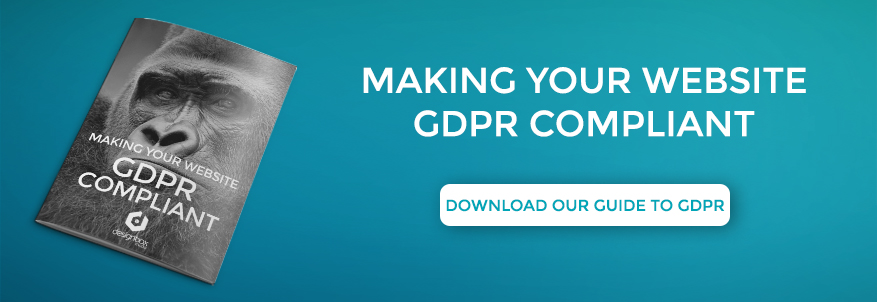Payment Gateway For Your Online Shop
As a business owner with an e-commerce website, you know how important it is that the whole transaction is smooth, quick and easily accessible. We go through a payment gateway comparison for your online shop.
Browsing and buying your product/service is key to the customer experience, but what about paying for it? How do you ensure you create a good quality end-to-end customer experience, which is also good for you? Which payment gateways will work best for your business and be economically viable at the same time?
Read on for our comparison of some of the best known and most used payment gateways:

Stripe
Stripe is the new kid on the block having only been established in 2010. It doesn’t have an offline option but has a lot of flexibility online including being able to create regular subscriptions and offer mobile payments which put it ahead of some of its competitors.
Pricing with Stripe is good, in the fact that there is no monthly fee, the fees are fairly transparent and quite low in cost. You will find though that fees are the same for credit and debit cards, and that it’s fairly complex to integrate; so, it is probably not the best option for small businesses.

PayPal
PayPal is one of the big players and seems to have been around forever. A well-trusted brand, PayPal has fairly simple payment mechanisms, and is easy to use, and so is better for the small business owner rather than Stripe.
One of the key differences between PayPal and Stripe is that PayPal fees tend to be slightly higher.

Sage Pay
One of the key benefits of Sage Pay above the other payment gateways is that you can also use Sage Pay at the point of sale and on the telephone so it’s great for diverse use.
Sage Pay comes with the brand of the Sage accounting software, so it’s well trusted. Sage Pay has a flat fee per transaction, rather than a percentage of the transaction cost. This means if you’re making bigger sales this is likely to work out better for you.
The downside is that opening an account isn’t always speedy. It can take up to five weeks to activate and authorise accounts, so one of the other payment gateways would be a better option for taking transactions quickly. It also has a monthly fee, so again better for organisations with a larger turnover.

Worldpay
Worldpay offers a global payment system and if you’re a larger business making international sales, this is a very secure option. It’s well-known, trusted and offers fraud screening.
There is a monthly fee, although with larger numbers of transactions charges can decrease, therefore this benefits a business with bulk sales. It isn’t really ideal for small businesses, and it can take some time to set your account up, but it’s a good option for large, global e-commerce organisations.
Having compared the four, you’ll see that if you’re a small business with limited technical knowledge PayPal is likely to be the best option for you. If you operate outside of the e-commerce world and need telephone or point of sale payments, then Sage Pay is the one that offers this seamlessly.
Stripe is great for flexibility and taking multiple types of digital payments and Worldpay is first class when it comes to large, international companies.
Google frequently makes changes to its search algorithm. Since 2000, Google SEO updates, both large and small, number in the hundreds, and they all affect the way content climbs or falls down the search engine results pages (SERPs). As such, marketers must accept that there is always a new Google search algorithm on the way.
These frequent changes are not often explained in detail. This leads to great speculation around how to change Search Engine Optimisation (SEO) strategies to stay high in the rankings. While we are never certain of precisely how the algorithm has changed, we can look at a few areas to pay attention to for your SEO strategy in 2018.
1. Mobile-first indexing
Around 60% of searches are now performed on mobile devices. This means mobile compatibility will become essential as Google moves from ‘mobile-friendly’ to ‘mobile-first’. The index of the search giant has already been split in two. One for desktop, and one for mobile – and it seems the time of mobile taking priority is finally here. The two indexes are now combining into one, and mobile will be prioritised.
Reference.

2. Increased focus on Featured Snippets
‘Featured Snippets’ are what appears above regular content on SERPs. If you manage to rank for them, they can significantly boost click-through rates and site traffic. They take many forms, from reviews to lists to answer boxes or event dates.
Google is continuing to expand Featured Snippets in 2018, giving greater preference to structured data. This is a line of code that can be added to a website’s HTML to provide Featured Snippets. With the addition of structured data, you can do things like creating a knowledge card that offers a more visually pleasing overview of your business.
3. Linkless mentions
In 2017, it was suggested that Google had developed the ability to recognise mentions in the same way as a physical link. These so-called ‘linkless mentions’ could be testimonies, positive reviews or other unlinked mentions of your company, and this will play a real factor in SEO.
4. Security is paramount
Google announced some time ago that they give preference to HTTPS sites for security reasons, and thus rank them higher. In their latest roadmap, they revealed that 2018 is the year they start punishing websites that don’t add an SSL.

5. Voice commands
Voice searches through technologies like Cortana, Alexa and Siri have grown enormously over the past ten years. This upward trend is expected to continue, placing even more focus on mobile optimisation. It could also change the way search terms are structured, with more ‘neutral’ search phrases likely as people voice more fully formed questions.
Voice search is also set to work in tandem with Featured Snippets moving forward, as technology like Google Assistant will read them aloud as an answer to voice searches.
Keep in mind that the specifics of Google’s algorithm updates are always kept under wraps. But if you focus on the areas covered in this article, you are in a strong position to carry out SEO best practice in 2018.
GDPR Website Checklist – See If Your Website Is GDPR Compliant.
The General Data Protection Regulation, or GDPR, is a new set of rules which will replace the current UK Data Protection Act of 1998. The purpose of GDPR is to give people greater autonomy over how their data is used by companies, and this means hefty penalties could be levied at companies who fail to comply with the new rules. Every aspect of your business, from web maintenance to marketing strategy, is likely to be affected by GDPR – and it’s time to act now. Here we will go through GDPR for websites.
GDPR comes into legislation on May 25th 2018. Achieving GDPR compliance may seem like a struggle, but with this handy checklist you should be able to get your data up to scratch. While this list is far from exhaustive, it should give you a brief outline of the processes your business should be implementing to remain compliant in the following categories:
Legitimate interest:
• Use a layered privacy notice, with the most important information upfront, and more detailed policy underneath.
• Explain why the data of an individual is needed when collecting it.
• Inform individuals of what we will do with their data.
• Offer the right to refuse marketing.
• Collect the minimum data necessary.
• Delete records after use.
Asking for consent:
• Ask customers/prospects to opt-in to marketing.
• Use plain, easy-to-understand language.
• Let individuals know they can withdraw their consent.
• Inform individuals withdrawal of consent won’t be to their detriment.
• Don’t make consent a pre-condition of service.
• Keep a record of when and how consent was obtained.
• Don’t use “pre-ticked” boxes as standard in web design.
• Keep consent separate from terms & conditions.
Provisions of information – make individuals aware of the following:
• The contact details and identity of your organisation.
• Details of your assigned data protection officer.
• The details of any third parties their details may be passed onto.
• Details of countries outside the EU in which their data may be processed.
• How long individuals’ data will be stored, and why.
• If statutory or contract law requires the data of an individual.
• The right to complain to the Information Commissioner’s Office if the individual feels their data has been misused.
• The right of the individual to request the deletion of their data.
• The reasons for processing data.
Third -party data – if purchasing data, you must:
• Know how the list has been compiled.
• Know whether consent has been obtained/updated.
• Request that data has been screened against the Mailing Preference Service/Telephone Preference Service.
• Ensure your organisation was named during the data collection process.
Profiling:
• Explain how you profile an individual for marketing purposes if they request such information.
• Give everyone the option to opt out of profiling.
While implementing these points into your current data collection processes may seem a little bit complicated, don’t worry – you’re not alone. GDPR is set to affect thousands of businesses throughout the entire world, and if you feel like your team could use some help in ensuring compliance by May 25th, the good news is that Design Box is currently offering a service which updates seven key website areas to ensure compliance for just £99.


